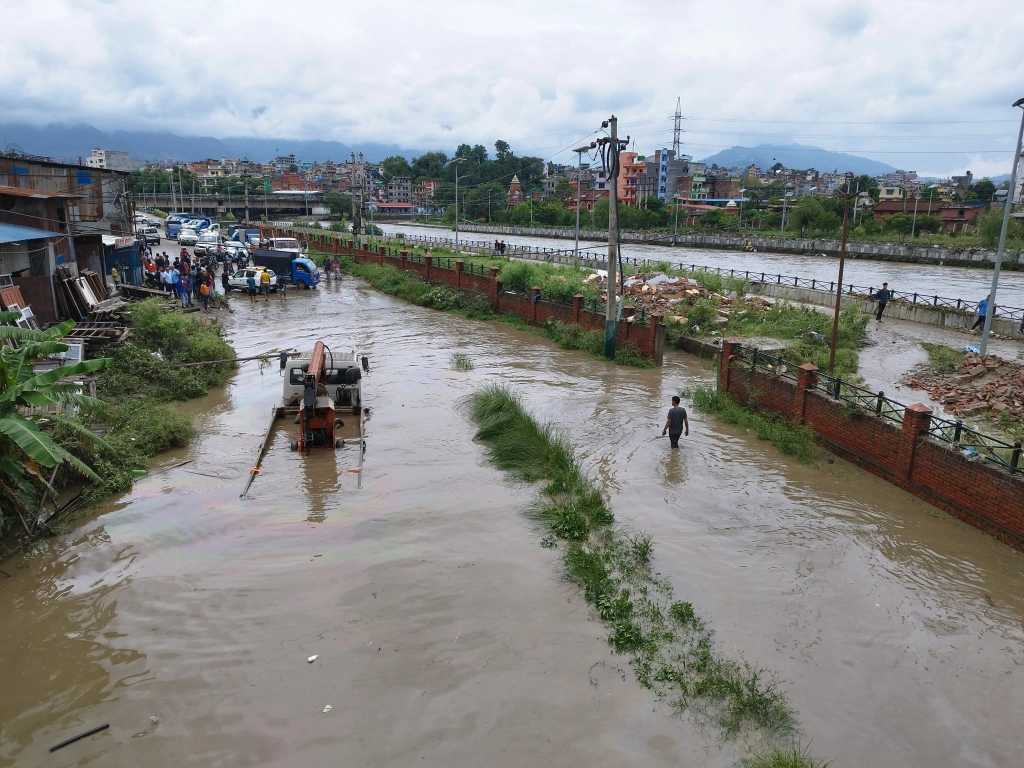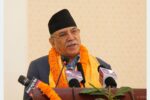A year ago, Mustak Alam, a 42-year-old businessman, had made reservations for a day trip from Kathmandu to Bhairahawa via bus.
As his family prepared for the journey, Alam, a businessman based in Kathmandu, decided to browse his Facebook account.
There, he stumbled upon a video claiming that the Prithvi Highway had been blocked by a landslide in Naubise of Dhading district.
Concerned for the safety of his two daughters and wife, Alam swiftly canceled the bus trip and bought air tickets to Bhairahawa.
However, he later found out that the video did not actually depict the landslide in Naubise. Reflecting on his decision, he said, “I ended up paying three times more just because I didn’t want to take any risks.”
He said, “Videos like the one that misled me are disseminated by Facebook users. They can lead to unintended consequences.”
Every monsoon season in Nepal, floods and landslides caused by heavy monsoon rains claim scores of lives and damage property worth millions of rupees.
In 2022, over 100 people died from floods and landslides in the country. This year’s monsoon, which ended in mid-October, saw the death of 104 people from floods, landslides and lightning, according to a report in The Kathmandu Post.
But the monsoon season also exacts another hidden toll: misinformation.
Over the last four months, social media users shared dramatic photos and videos depicting the destructive impact of the disasters across the country.
Many of them were false and misleading, according to fact-checks from Nepal Check.
In June, Nepali-language digital outlets as well as social media users shared a photo of a bridge that collapsed following heavy rains in eastern Nepal, claiming to show a bridge damaged by floods in Sankhuwasabha district in northeastern Nepal.
However, Nepal Check found the photo actually depicts a collapsed bridge over the Hewa Khola in Panchthar district.

In another instance, a video clip with claims that it showed landslides along the Narayangadh-Mugling road in Nepal was found to be from Himachal Pradesh, India.
As monsoon season hit India’s Himachal Pradesh hard, a video clip from a river flood in eastern Nepal over seven years ago was shared with claims that it showed devastation in the northwestern Indian state.
Utilizing Google Earth’s Historical Satellite Imagery, Nepal Check found that it occurred in a river in the southeastern town of Duhabi in Nepal.
Experts have pointed out that during crises like natural disasters, people desperately seek information at a time of information void, a situation the purveyors of false information take advantage of.
“Whether it’s the Covid pandemic or disasters such as floods, people are confused. Accurate information is at a premium,” said Ishwar Rauniyar, a risk communication expert.
“In Nepal, we have seen online outlets publishing unverified news to increase visitors to their websites.”
Studies have shown that people turn to social media platforms for information during disasters, eschewing official sources of information, which may be hard to understand.
The disasters on the ground mirror the chaos on social media, where people desperately seek information to comprehend the unfolding crisis.
Yet, in such a situation, there’s both an information void and information overload. The dearth of accurate and timely updates creates an information void, ripe for exploitation by purveyors of false narratives.
The cycle amplifies the chaos, sowing confusion and panic within the affected communities.
Rauniyar, who worked for UNICEF as a risk communication expert during the Covid-19 pandemic, said authorities should build strong risk communication strategies to provide accurate information to the people.
“Government agencies such as the National Disaster Risk Reduction and Management Authority can assess the risk ahead of the monsoon season and provide warnings to people of the areas that can be affected.”
He also pointed out that the state agencies should only disseminate the verified information and promise people further updates as information comes in.
“We can apply some of the lessons we learned during the Covid pandemic,” he said. “If a government fails to handle a crisis situation well, the opposition can cash in on the chaos,” he said.
(Source: https://nepalcheck.org/2023/10/15)








Comment